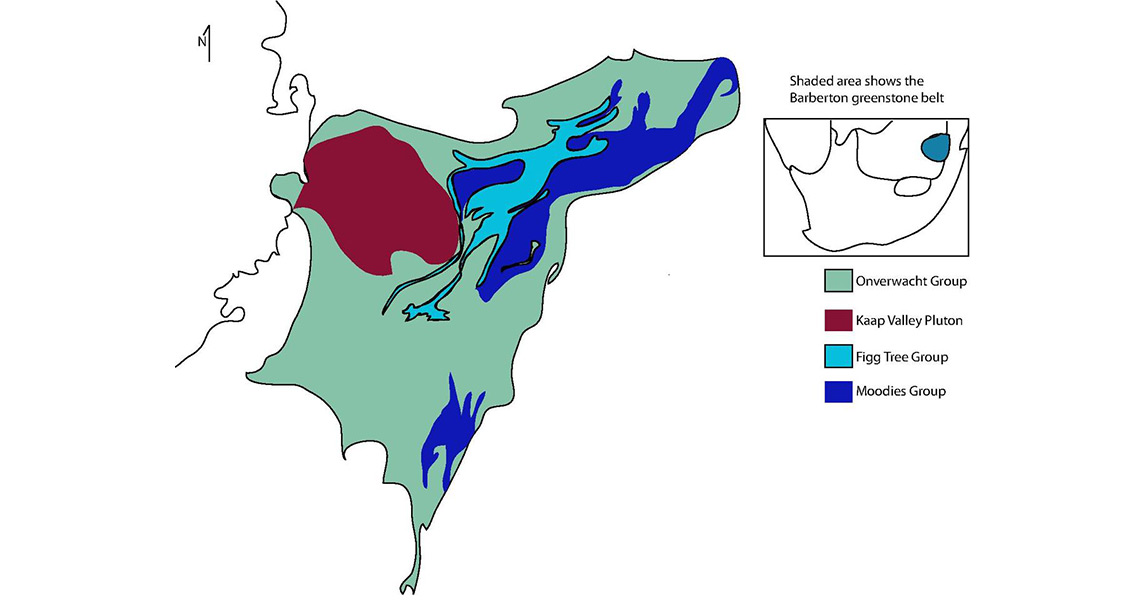<![CDATA[Tiny grains of pyrite, discovered by researchers from Berlin, Potsdam and Jena (Germany) in the ancient rock formations of the Barberton greenstone belt, offer the earliest proof of life on land 3.2 billion years ago, approximately 300 million years earlier than documented previously. Located in South Africa, this rock formation which dates back 3.5 billion years is among the oldest on Earth. Within a layer that dates to 3.22 billion years ago, tiny grains of the iron sulfide mineral were discovered that showed signs of microbial activity. These indicators are recorded both in the ratio between different sulfur isotopes (345 and 325) as well as in trace element distributions. Using instrumentation previously installed in Potsdam the team, led by Sami Nabhan with the Freie Universität Berlins, were able to show that in the core of some crystals the fraction of 34S differed predictably from that of the fraction of 34S at the rim of the crystal, suggesting the exterior of the grain experienced biogenic fractionation, the microbial processing of sulfur. Using samples with masses under one billionth of a gram, the 34S/32S ratio was determined in the secondary ion mass spectrometry (SIMS) lab at the GFZ German Research Centre for Geosciences. Greenstone Belts, which get their name from the green minerals they contain (Actinolite, Chromium Muscovite "Fuchsite", amphiboles, Epidote, serpentine and green chlorite), consist of deformed sedimentary and volcanic strata. The Barberton greenstone belt is among the oldest found on Earth, and is known in geological circles as being a treasure trove of significant geological marvels. The formation range is also known as the ‘Genesis of Life’, because the ancient Achaean rocks included in its geology are some of the best persevered. Despite being 3.5 billion years old, these ancient rocks are so well preserved their fossils are able to accurately record the first life forms on Earth, in addition to evidence of the first huge meteorite impact ever recorded and possibly related to the moon’s formation. The composition of the rock, the layering visible in the field, and the shape of the crystals, all indicate the rock material came from an ancient soil profile; a paleosol that developed on a flood plain billions of years ago. Data collected at the site indicates the iron sulfide crystals were carried by sediment that had been transported by a river system, leading researchers to believe that microbes living within the soil subsequently created the overgrowths on the rims of the pyrite crystals. Earth is just over 4.5 billion years old (zircon crystals are the oldest material on the planet at 4.3 billion-years-old) and its beginning was geologically violent, with a constant barrage of meteorites after which the planet cooled, its surface solidified and created the first solid rocks. Life on Earth began with single-celled prokaryotic cells, such as bacteria. Multicellular life didn’t evolve until more than a billion years later and the life forms we’re familiar with only started evolving in the last 570 million years (MA). It started with arthropods, 40 million years after that fish evolved, then plants showed up (475 Ma) and forests (385 Ma). Mammals evolved 200Ma, and Homo sapiens, our own species, just 200,000 years ago -- humans have been present for just 0.004% of the Earth's history. ]]>
Tiny Grains Push Life Back 300 Million Years
